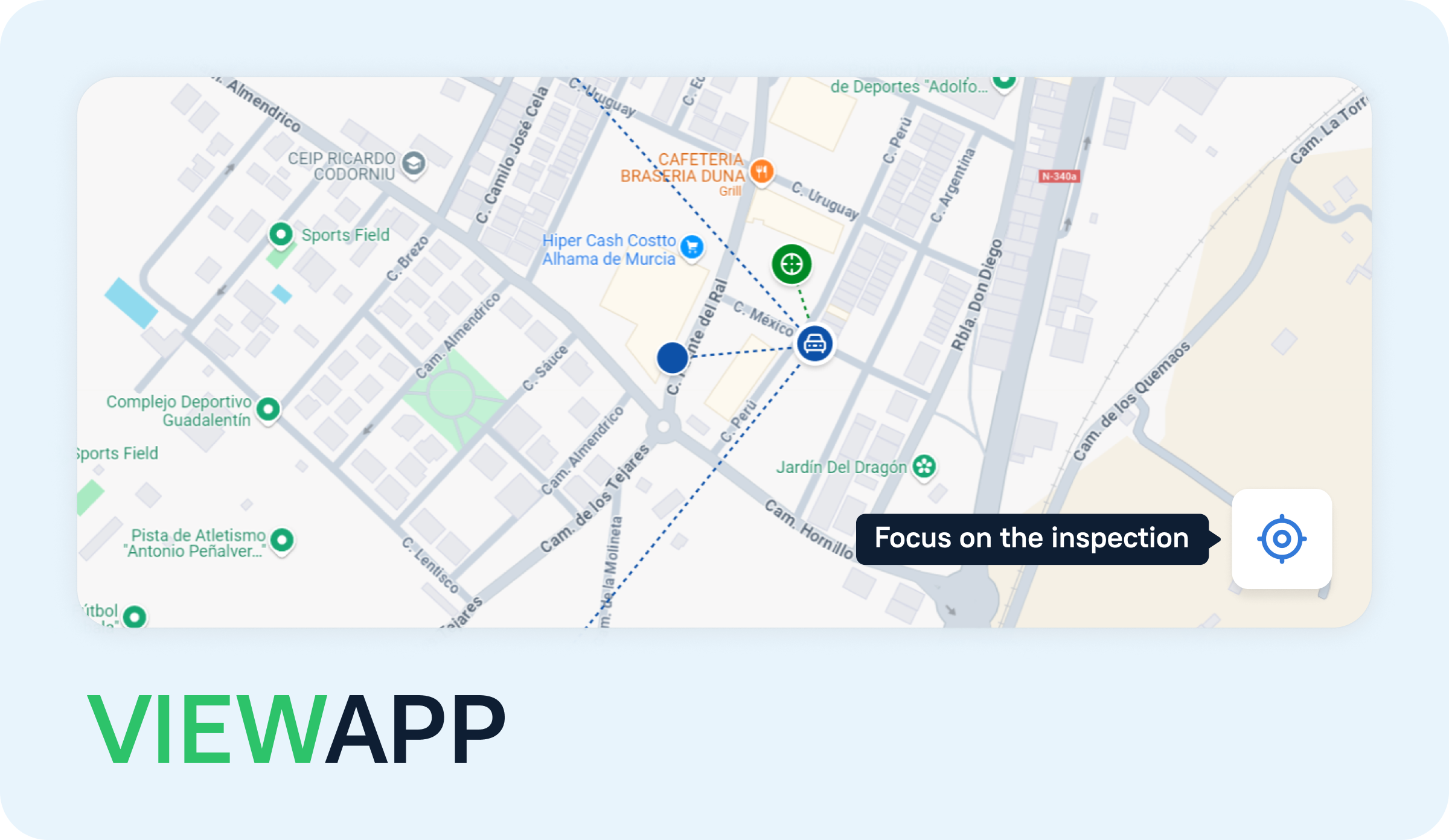
The functionality of the VIEWAPP digital inspection platform has been updated with another improvement in the quality and convenience of expert specialists' work in analysing inspection results, as well as a mechanism for collecting information from experts to work out various cases of anomalous user behaviour and data to counteract fraud.
Centring button: why and when is it needed?
When checking an inspection, analysing the collected coordinates in the ‘Inspection Location’ section, an expert may encounter a situation when a user has worked with the application from different locations and the spread of points on the map is quite large.
It may take a long time to return to the main inspection point after checking other steps away from the main address.
To simplify the task of finding the main inspection location (address), a centering button has been added to the map to instantly return to the original location and zoom that was shown when the map was first opened. This saves inspection verification time and improves usability.
Additionally, as part of the completed photo or video step, if the map is successfully loaded, it is possible to centre on specific cadastral numbers.
Feedback block - collecting experts' experience
In previous updates, we told you about the ‘Anomalies’ toolbox - a crucial element of the anti-fraud system. ‘Feedback block’ serves as a tool to collect data for analysing various anomalies.
Experts, who regularly conduct checks of performed inspections, accumulate a wealth of experience in identifying dubious user actions. Logically, such valuable information should be stored and serve as a basis for more accurate identification of problem areas and training of neural networks within the anomaly workflow, which in turn will help speed up the overall examination process.
A new development has been added to the examination page in the form of an ‘Examination Feedback’ block to collect and then analyse patterns indicating why examinations are considered suspicious.
Working with the block consists of several actions. The first one is to sel ect the degree of suspiciousness of the examination fr om the offered options. Second - optionally, when selecting the degree of suspiciousness from low and higher, select a tag option, if it describes the situation, and then leave a free comment. For example, to write what sequence of actions indicated the unreliability of the inspection.
This block is available for editing for experts at the moment of examination, and for administrators - in any examination status.